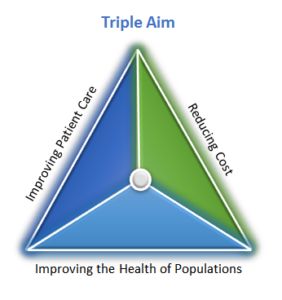Author: Luis Argueso
The primary barrier to adoption of telemedicine as a universal tool for providing medicine has been the lack of reimbursement for telemedicine services.[1] On July 21, 2018, the Centers for Medicare & Medicaid Services (CMS) took a major step towards facilitating reimbursement for telemedicine in its proposed rule for the calendar year 2019 Medicare Physician Fee Schedule (MPFS).[2] Should CMS adopt the revisions contained in the proposed rule, healthcare providers will experience a sea change in their ability to receive payment for telemedicine services.
SUMMARY OF PROPOSED CHANGES
Historically, Medicare has imposed a number of preconditions for reimbursement for telemedicine services. Chief among them is the requirement that the beneficiary of the service receive care in an “originating site” located in a rural or healthcare provider shortage area. The 2019 MPFS proposed rule defines three new groups of Current Procedural Terminology (CPT) codes that any qualified provider can bill Medicare for reimbursement. These codes are summarized in the table below, along with the proposed work relative value unit (wRVU) amounts:
| CPT Code(s) | Description | Conditions | wRVUs |
| GVCI1 | Brief Communication Technology-based Service (e.g., Virtual Check-In): A brief, non-face-to-face check in with a patient via a communication technology (e.g., telephone or internet) to determine if an office visit or other service is needed. | Cannot originate from an evaluation and management (E&M) within the prior 7 days and cannot lead to a service or procedure within the next 24 hours or soonest available appointment. Only applicable to established patients. | 0.25 |
| GRAS1 | Remote Evaluation of Pre-Recorded Patient Information: Evaluation of a patient using pre-recorded still images or videos to determine if an office visit or other service is needed; includes verbal follow-up within 24 hours. | Cannot originate from an evaluation and management (E&M) within the prior 7 days and cannot lead to a service or procedure within the next 24 hours or soonest available appointment. Does not include evaluation of health data (considered to be remote patient monitoring). Provider must follow-up with patient within 24 hours of evaluation of image(s)/video(s). | 0.18 |
| 994X6, 994X0, 99446, 99447, 99448, and 99449 | Interprofessional Internet Consultation: Assessment and management of patients conducted through telephone, internet or electronic health record consultations by a consulting provider when requested by the patient’s treating provider; treating provider requires specialty expertise of the consulting physician, the latter of whom does not need to perform face-to-face evaluation of the patient. | Requires verbal consent from patient prior to consultation. A verbal or written report must be prepared by the consulting provider for the treating provider. Does not include continuing education or information shared as a professional courtesy. | From 0.35 to 1.40 |
The three groups described above are just one component of the ways in which CMS is changing telemedicine reimbursement; additional proposed reimbursement changes include:
- Additions/revisions to Medicare telemedicine codes currently reimbursable, but subject to preconditions in Section 1834(m) of the Social Security Act; and
- Creation of separate payments for medication assisted treatment for substance use disorders.
While there are still many developing changes in the telemedicine world, CMS is taking steps that will lead to additional reimbursement for telemedicine in recognition of the ability of this form of medical care to achieve the triple aims of improving outcomes, increasing patient satisfaction, and reducing costs.
COMPLIANCE GOING FORWARD
While changes in government (and commercial) payor policies regarding telemedicine reimbursement may lead to substantial growth in the industry, there are important considerations providers must take into account to ensure compliance. As telemedicine service arrangements often involve payments between designated health service providers and professional medical practitioners, the Stark Law and Anti-Kickback Statutes are often implicated. Below are a few of the key items to consider should the CMS 2019 MPFS proposed rules become adopted:
- Increased reimbursement implies decreased financial support: If a telemedicine provider is billing and collecting for telemedicine services, the entity providing financial support for their services must account for the significant impact to revenue from improved reimbursement. This may result in a revision to fair market value compensation.
- Reevaluating commercial reasonableness: Historically, it has been common for facilities and telemedicine providers to forego billing and collecting for professional services. With the opportunity for reimbursement from Medicare, it may no longer be commercially reasonable for the parties to forego collecting for professional telemedicine services.
- Keeping on top of changes: As acknowledged in the proposed rule to the 2019 MPFS, telemedicine services are distinct from other forms of healthcare services (e.g., face-to-face in-person care). When evaluating fair market value compensation for and commercial reasonableness of telemedicine services arrangements, ensure the valuation considers the latest industry developments and unique considerations associated with these arrangements. HealthCare Appraisers recently cohosted a webinar to review these very items.
CONCLUSION
As leaders in the healthcare valuation industry, HealthCare Appraisers continues to review and adapt our valuation process as quickly as the market evolves. As scrutiny of telemedicine payments by regulators is expected to continue to grow, our experience in the telemedicine industry provides us with the background necessary to ensure your arrangement satisfies commercial reasonableness and FMV requirements.
[1] For example, in the 2017 Telemedicine and Digital Health Survey published by Foley and Lardner LLP, 59% of respondents reported that “lack of third party reimbursement for telemedicine services” posed a challenge to implementing telemedicine programs. Survey accessed from: https://www.foley.com/2017-telemedicine–digital-health-survey-11-15-2017/
